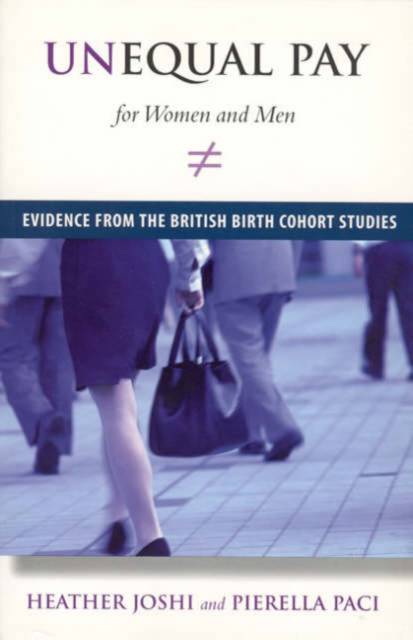
- Afhalen na 1 uur in een winkel met voorraad
- Gratis thuislevering in België vanaf € 30
- Ruim aanbod met 7 miljoen producten
- Afhalen na 1 uur in een winkel met voorraad
- Gratis thuislevering in België vanaf € 30
- Ruim aanbod met 7 miljoen producten
Unequal Pay for Women and Men
Evidence from the British Birth Cohort Studies
Heather Joshi, Pierella PaciOmschrijving
The authors argue that no amount of training, maternity and parental leave, or child care provisions will change women's economic status if pay treatment remains unequal--if the market values men's time more than women's.
For most of recorded history, men's pay has tended to be higher than women's. This both reflects and underpins gender roles, with men's authority more highly valued socially as well as economically. In Unequal Pay for Women and Men, Heather Joshi and Pierella Paci look at why gender pay inequality matters. They argue that no amount of training, maternity and parental leave, or child care provisions will change women's economic status if pay treatment remains unequal--if the market values men's time more than women's.
The book is the result of an extensive study of the relative wages of British men and women between 1978 and 1991. Using two large and extremely detailed longitudinal data sets, one of women and men born in 1946, and the other of women and men born in 1958, the authors examine the evolution of the pay gap over time and evaluate the success of policies designed to establish equal pay.
Although the book focuses mainly on Britain, the results are of interest to labor economists in other countries, as well as to researchers in other fields studying the changing role of women in the labor force.
Specificaties
Betrokkenen
- Auteur(s):
- Uitgeverij:
Inhoud
- Aantal bladzijden:
- 199
- Taal:
- Engels
- Reeks:
Eigenschappen
- Productcode (EAN):
- 9780262600392
- Verschijningsdatum:
- 23/02/2001
- Uitvoering:
- Paperback
- Formaat:
- Trade paperback (VS)
- Afmetingen:
- 141 mm x 218 mm
- Gewicht:
- 290 g

Alleen bij Standaard Boekhandel
Beoordelingen
We publiceren alleen reviews die voldoen aan de voorwaarden voor reviews. Bekijk onze voorwaarden voor reviews.











